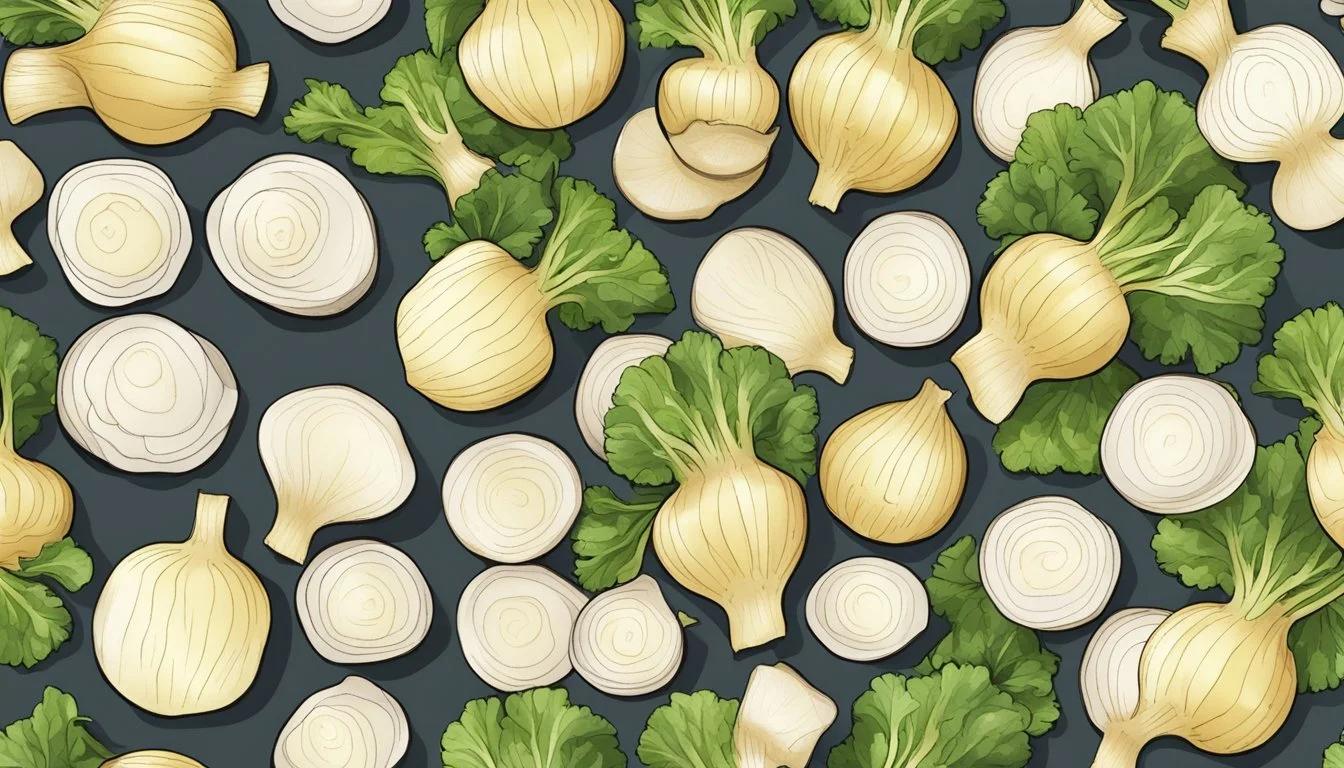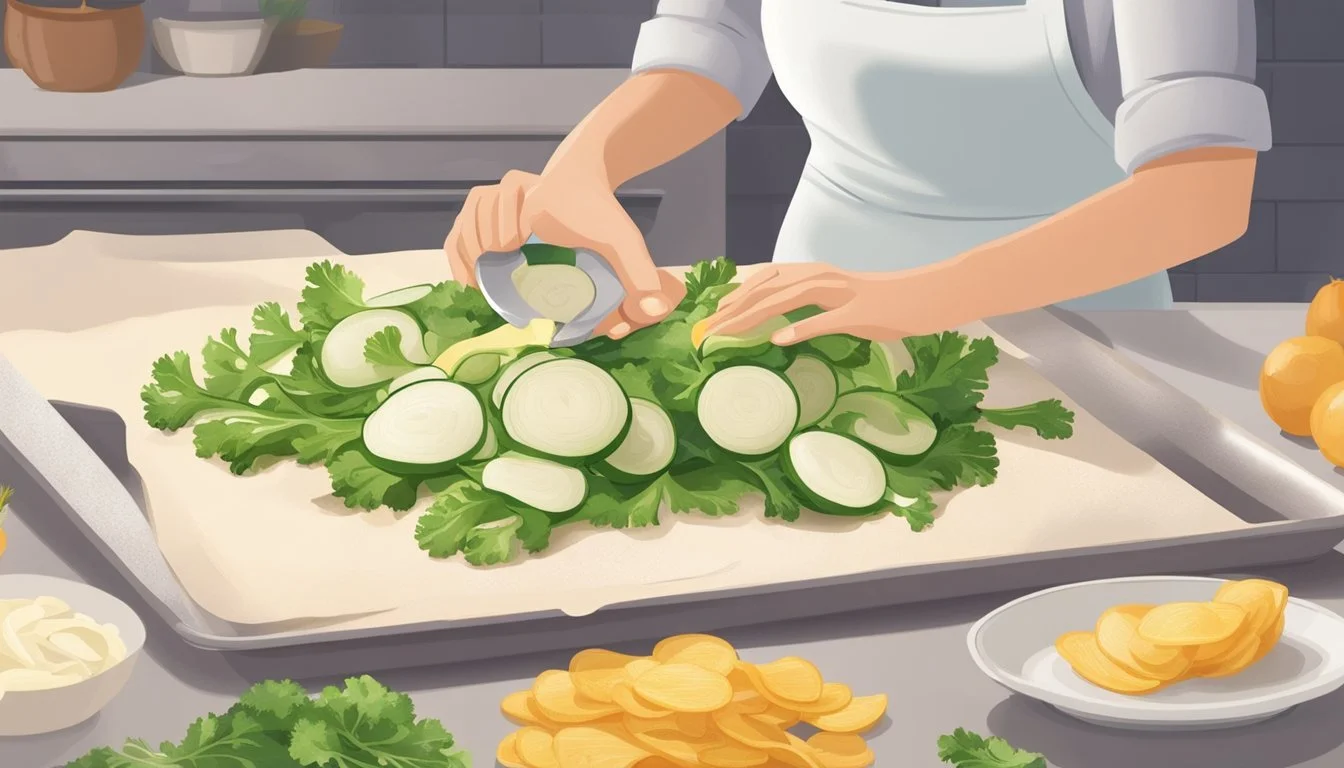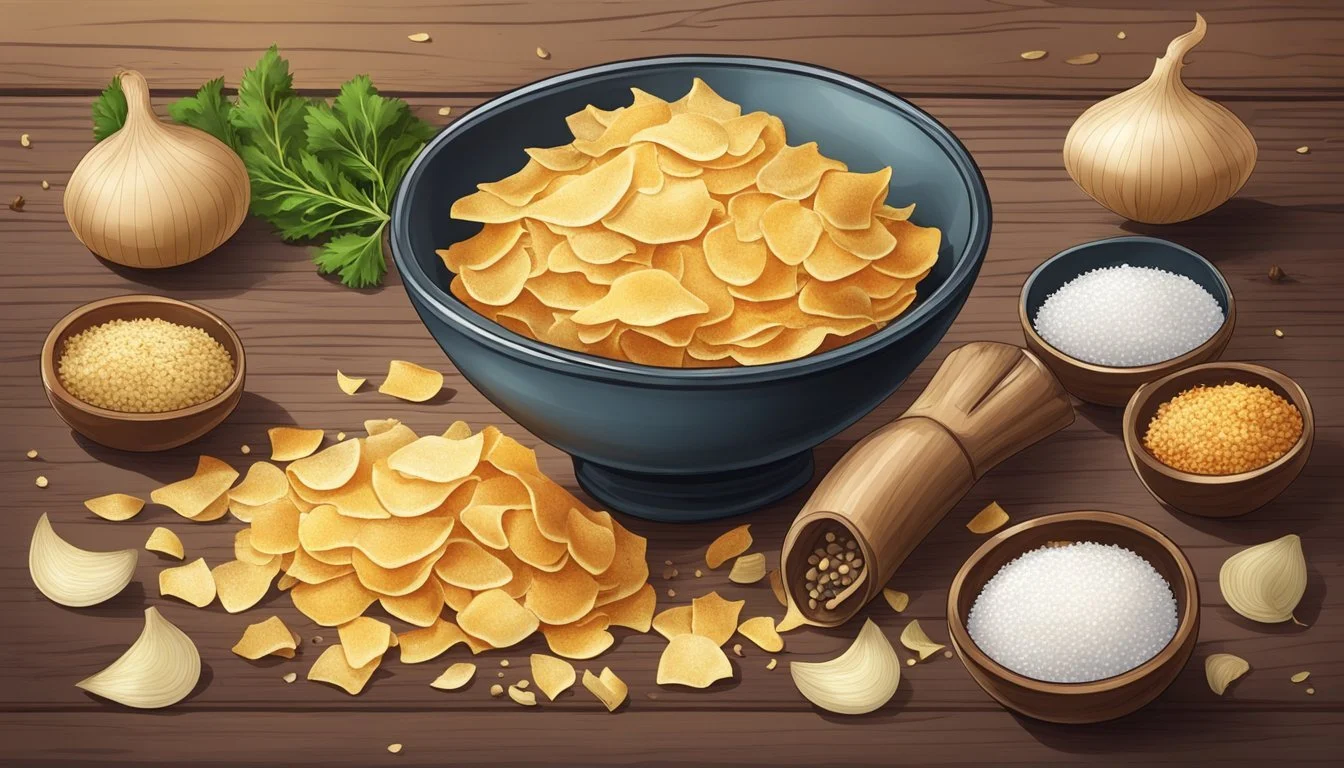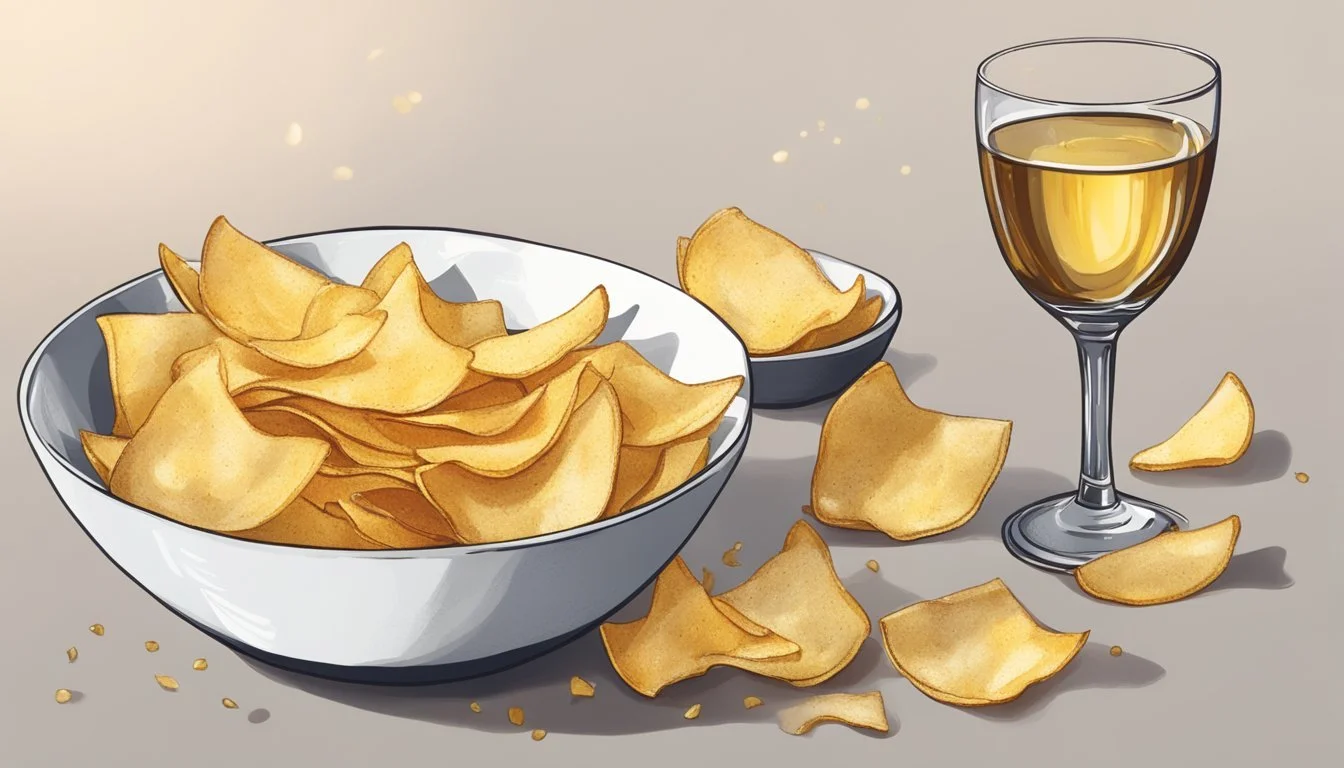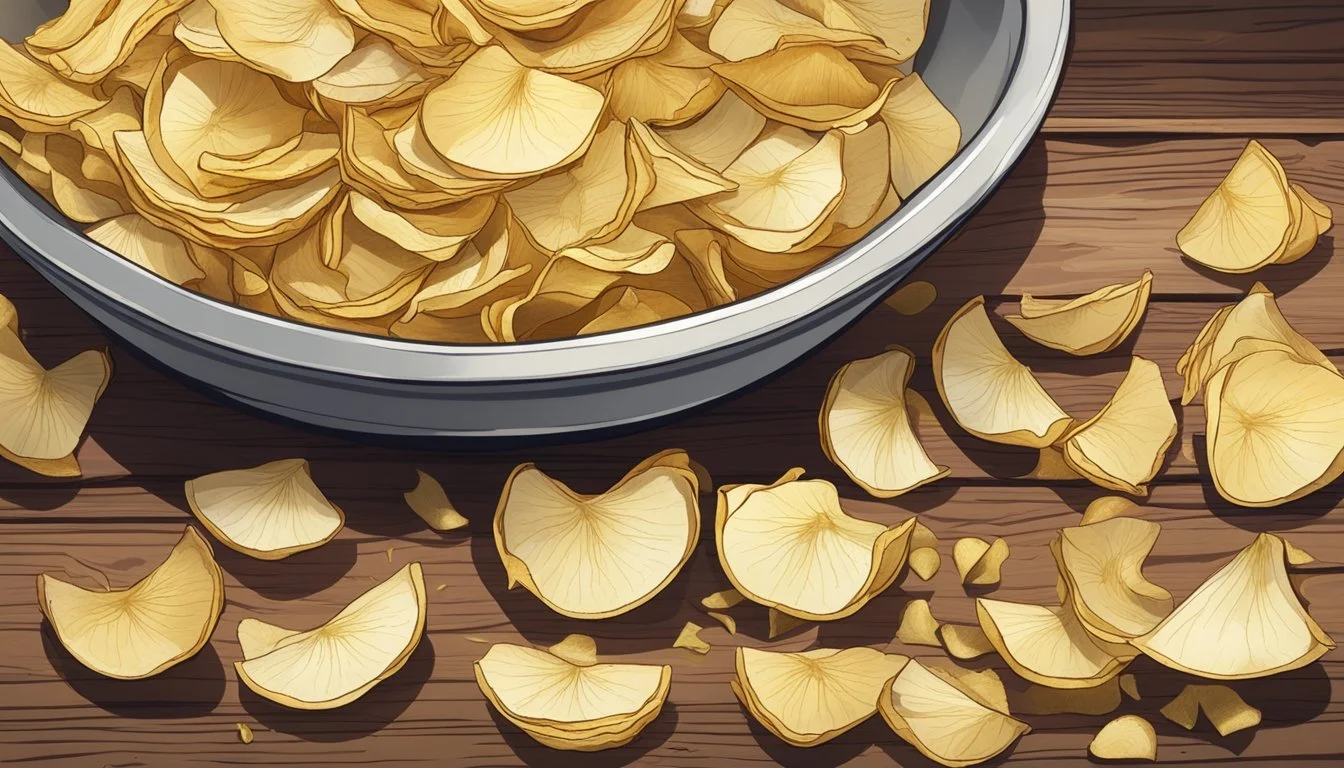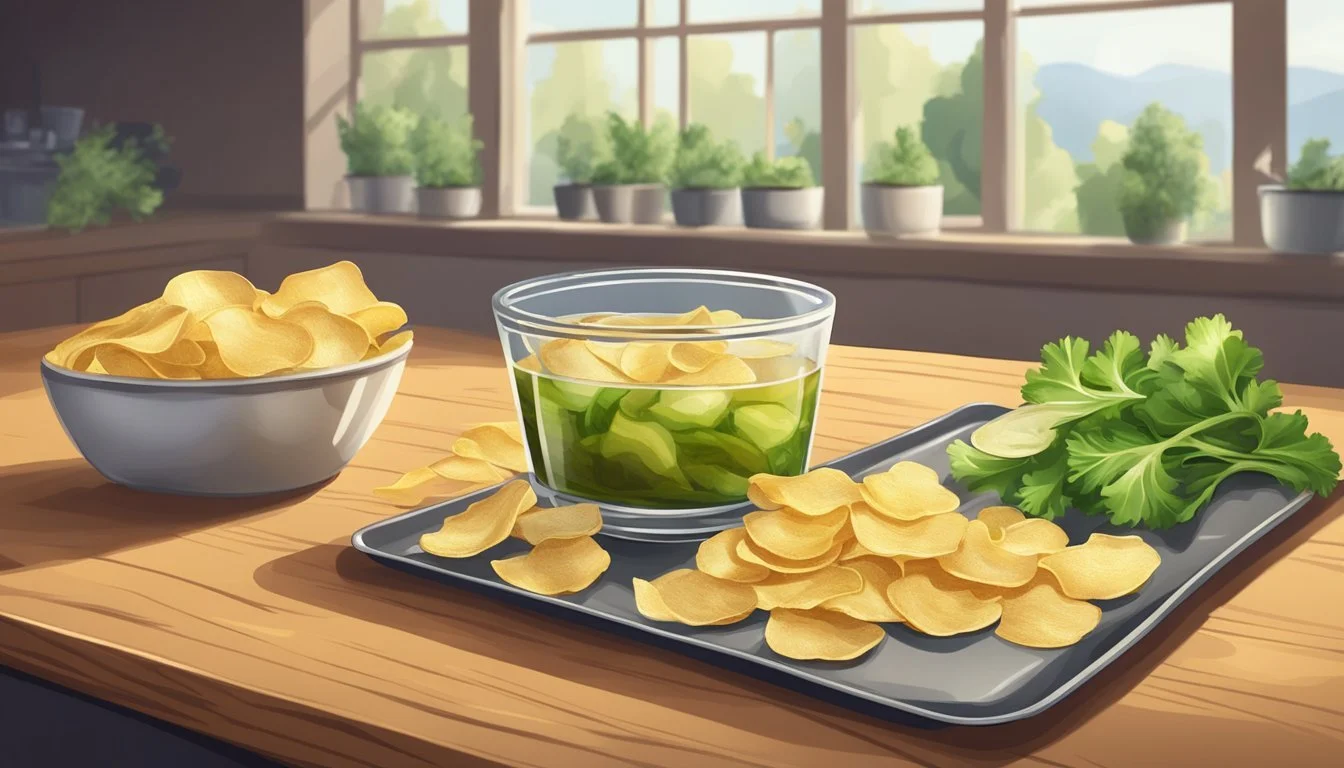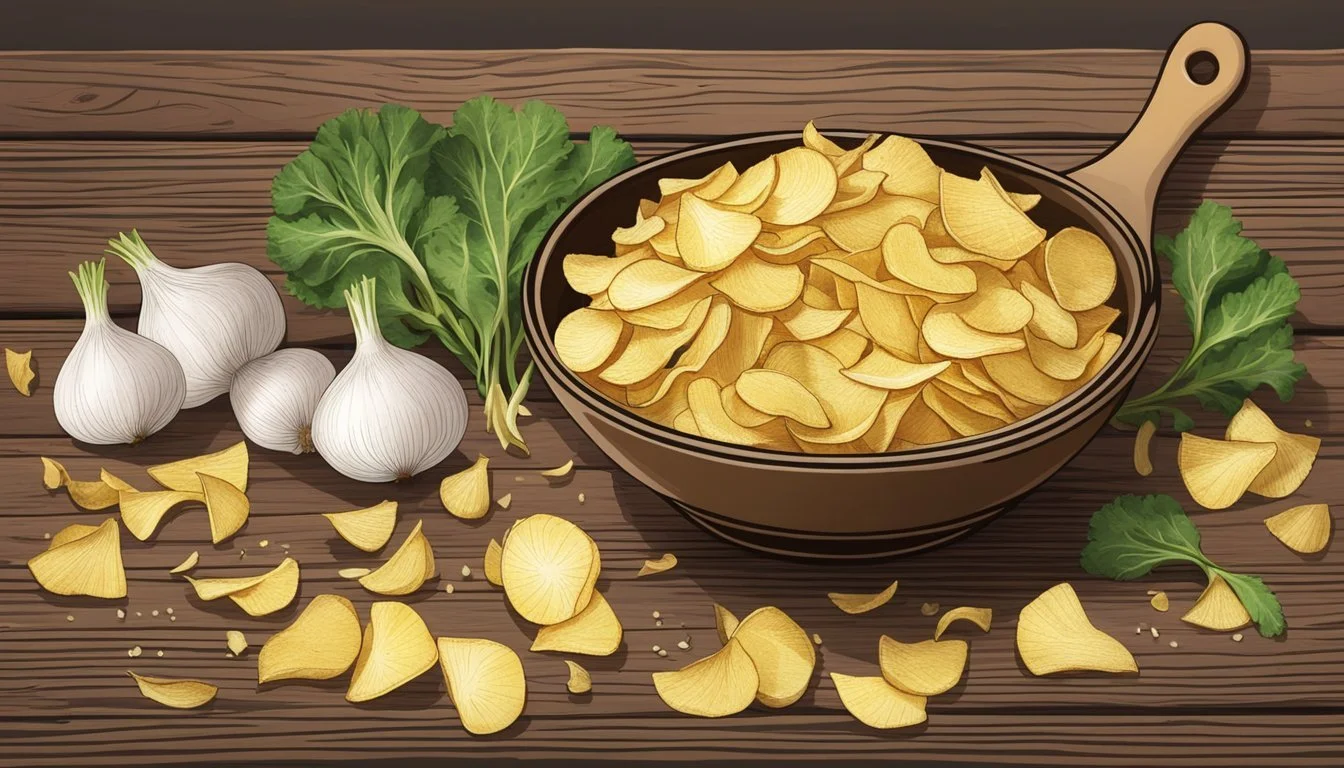Turnip Peel Chips
A Crispy, Low-Carb Snack Alternative
Turnip peel chips are emerging as a delicious and healthier alternative to traditional potato chips. High in nutrients and low in carbs, these innovative snacks (What wine goes well with snacks?) cater to those looking to satisfy their crunch cravings without straying from a health-conscious diet. Unlike their starchy counterparts, turnip chips offer a unique flavor profile and a guilt-free snacking experience, proving that making smarter food choices doesn't mean sacrificing taste.
The process of making turnip peel chips is relatively simple, requiring minimal ingredients and effort. Whether opting for the convenience of an air fryer or the traditional method of oven-baking, these chips can be customized with an array of spices and seasonings to match any palate. Thinly slicing the turnips ensures that each chip achieves maximum crispiness, transforming the often-overlooked turnip peels into a delectable treat that's both satisfying and nutritious.
As consumers become more aware of their dietary choices, turnip peel chips stand out as a versatile and accessible option for health-conscious snackers. Their rise in popularity reflects a broader trend towards plant-based diets and alternative snacking options, affirming that turnip peel chips are much more than just a passing fad. They represent a creative use of a humble root vegetable, proving that with a bit of innovation, even the simplest ingredients can be turned into something extraordinary.
Understanding Turnips
Turnips are a versatile root vegetable that form the foundation for a variety of low-carb snack options, including crispy turnip peel chips.
The Nutrition of Turnips
Turnips offer a robust nutritional profile, rich in vitamin C and dietary fibers. They serve as a healthy alternative to traditional snacks, with a low carbohydrate count that appeals to those following a low-carb diet. A standard cup of cooked turnips contains approximately:
34 calories
4.6 grams of naturally occurring sugar
4.7 net carbs
1.1 grams of protein
0.1 grams of fat
Comparing Turnips and Potatoes
In comparison to potatoes, turnips have fewer calories and carbs, making them a preferred option for low-carb diets. While both are root vegetables, turnips are lighter in texture and flavor. A comparison table for a 100g serving of each:
Nutrient Turnips Potatoes Calories 28 77 Carbohydrates 6.4g 17.5g Dietary Fiber 1.8g 2.2g Vitamin C 21mg 19.7mg
Selecting the Right Turnips for Chips
For the crispiest turnip chips, one should select fresh, firm, and heavy turnips. The skin should be smooth, devoid of any soft spots or blemishes. Size can impact flavor, with smaller turnips typically being sweeter and more tender, ideal for chips.
Essential Kitchen Tools
To achieve the desired crispiness of turnip peel chips, one must use the proper kitchen equipment. Precision in slicing and even cooking are vital, and the following tools will ensure these criteria are met.
Choosing the Best Mandoline
Mandoline: A mandoline slicer is indispensable for creating uniformly thin turnip slices, ensuring that the chips cook evenly. Look for a mandoline that is easy to handle, stable, and comes with adjustable settings for slice thickness.
Blade Sharpness: It should feature a sharp, durable blade, preferably stainless steel, that can easily cut through turnips without requiring excessive pressure.
Safety Features: A hand guard is crucial to protect fingers during slicing. Some mandolines may also include non-slip feet or folding stands for added stability.
Baking Sheet and Parchment Paper
Baking Sheet: A flat, heavy-duty baking sheet is essential, as it conducts heat well and prevents the chips from burning. For large batches, one might need multiple sheets.
Parchment Paper: Lining the baking sheet with parchment paper is recommended for non-stick baking and effortless cleanup.
Size and Material: The best baking sheets are typically aluminum or stainless steel. Ensure they fit in the oven with ample space for air circulation.
Parchment versus Silicone Mats: While silicone mats can be an alternative to parchment paper, they may alter cooking times slightly due to their heat-resistant properties. Parchment paper aids in achieving the golden crispness desired for chips.
Mixing Bowl: Before baking, tossing the turnip slices in a sizeable mixing bowl with oil and spices is necessary for even coating. This step helps in achieving flavorful, crispy chips.
Preparation Basics
Creating crispy turnip peel chips involves meticulous preparation to ensure a perfect low-carb snack. One must wash and peel the turnips properly and slice them uniformly for even cooking.
Washing and Peeling
The turnips first need to be thoroughly washed to remove any residual dirt. It is essential that they are then peeled, a step that not only removes the tougher outer skin but also plays a part in the texture and taste of the final product. This peeled exterior can be transformed into delicious chips without waste.
Slicing Turnips Uniformly
For turnips to cook evenly and crisp up, they must be sliced into uniform sizes. The best tool for achieving consistency is a mandoline slicer, which allows precise control over the thickness of the slices. Typical thickness is about 1/4" (or half centimeter) thin, which is ideal for that sought-after crispiness. Uniformly sliced turnips will also prevent varying degrees of doneness when baked or air-fried.
Seasoning Variants
Offering a range of seasonings can transform turnip peel chips from a simple snack into a flavorful experience. Proper seasoning not only complements the chips' natural taste but also caters to diverse palates.
Classic Salt and Pepper
The quintessential combination of salt and black pepper provides a simple yet satisfying seasoning option. To achieve the classic taste when making turnip peel chips:
Salt: Sprinkle a moderate amount of sea salt or kosher salt for a balanced flavor.
Pepper: Add freshly ground black pepper to enhance the chips with a pungent aroma and a spicy kick.
The ratio of salt to pepper can be adjusted according to one's preference for a more pronounced saltiness or peppery heat.
Herbal and Spiced Alternatives
For those seeking a more aromatic twist, various herbs and spices can elevate turnip peel chips into an exciting snack option. Some popular seasonings include:
Olive Oil or Avocado Oil: Both oils serve as a healthy base that ensures spices adhere evenly to the turnip peels.
Paprika: This spice contributes a sweet and smoky flavor with a touch of warmth.
Garlic Powder: Garlic powder adds a robust, savory note that is beloved by many.
Cayenne: A pinch of cayenne pepper can introduce a fiery element for those who prefer a spicy kick.
Onion Powder: Onion powder offers a slight onion sweet flavor without overpowering the other spices.
Dried Parsley: Flecks of dried parsley not only add a fresh, herbaceous flavor but also provide a pop of color to the finished product.
These spices can be tailored to taste, mixed and matched, or used to create unique blends that satisfy a variety of flavor profiles.
Cooking Methods
When making turnip chips, achieving a crispy texture is key. Whether using an oven or an air fryer, proper technique ensures that turnip chips come out evenly cooked and deliciously crunchy.
Baking Turnip Chips
For those opting to bake their turnip chips, preheating the oven to 300-400 degrees Fahrenheit is essential. One begins by peeling the turnips and slicing them thinly, preferably with a mandoline for uniform thickness. The slices should then be laid out on baking sheets lined with a silicone mat or parchment paper to prevent sticking, taking care to arrange them in a single layer to promote even cooking. Prior to baking, one should toss the turnip slices in a mixture of oil and seasonings to ensure each chip is well-coated, which contributes to the final crispy texture.
Preheat oven to 300-400°F (149-204°C).
Lay turnip slices in a single layer on baking sheets.
Bake until crispy, turning halfway through the cooking time.
Using an Air Fryer for Crispiness
An air fryer serves as an excellent alternative for making turnip chips with a focus on a crispier outcome and potentially shorter cooking times. After coating the thinly sliced turnips with oil and desired seasonings, they are placed in the air fryer basket. It is important not to overcrowd the basket to allow hot air to circulate freely around each slice. The temperature is often set a bit higher than in an oven, and the chips usually require less time to become crispy.
Preheat air fryer to around 375°F (190°C).
Ensure turnips are in a single layer in the air fryer basket.
Air fry until chips reach desired crispiness, shaking the basket occasionally.
In both methods, one should keep a close eye on the turnip chips as they cook to prevent burning, given their thinness and the variation in oven and air fryer heating elements.
Serving and Pairings
When serving turnip peel chips, one has a variety of pairing options, ranging from dips and dressings to how they can complement a meal as a side dish or a light snack. Their crispy texture and flavorful nature allow them to stand out in both settings.
Dips and Dressings
Turnip chips' neutral taste allows them to be served with a plethora of dips. For those seeking a creamy complement, yogurt-based dressings with herbs like dill or parsley offer a tangy contrast to the chip's crispness. Alternatively, a bold aioli or a classic ranch can elevate the snacking experience. Here's a brief table of dip pairings:
Dip Type Suggested Flavor Combinations Yogurt-based Garlic, lemon zest, dill, chives Aioli Roasted garlic, lemon juice, smoked paprika Ranch Buttermilk, chive, parsley, garlic powder
Turnip Chips as a Side Dish or Snack
Turnip chips can be enjoyed as a standalone snack, or as a side dish to complement main courses. They are ideally portioned in small servings, so as not to overpower the palate, and can offer a crunchy contrast to softer textures on the plate. For a snack, a small bowl per person is sufficient, while as a side dish, they can be artfully arranged on a plate alongside sandwiches, burgers, or wraps. Here are some optimal pairings:
Sandwiches: A serving of turnip chips adds a low-carb crunch to the meal.
Burgers: Swap traditional potato fries for turnip chips as a lighter side.
Wraps: Complement a wrap with a side of these chips for added texture.
The versatility of turnip chips in various serving scenarios makes them a valuable addition to any culinary repertoire.
Special Dietary Considerations
Turnip peel chips are a versatile snack that can cater to various dietary needs, offering a nutritious alternative to traditional chips. They are particularly appealing to those following a keto or low-carb diet due to their low net carb content.
Keto-Friendly Snacking
Turnip peel chips are an excellent snack for individuals on the keto diet. The ketogenic diet emphasizes minimizing carbohydrate intake and replacing it with fats, leading to a state known as ketosis. With turnips generally containing around 4.7 net carbs per cup, these chips can easily fit into a daily carb allotment. They are not only low in net carbs but also in calories, making them a healthy snacking choice.
Net Carbs: Approximately 4.7g per cup (cooked turnips)
Keto Diet: Compatible as part of the daily carbohydrate limit
Allergens and Dietary Restrictions
For those with dietary restrictions, turnip peel chips offer a snack that is free from many common allergens. They are inherently gluten-free, making them a suitable option for individuals with celiac disease or gluten sensitivities. Additionally, when prepared with suitable oil, they can be both vegan and dairy-free. Care should be taken to ensure that the spices and oils used are compliant with these dietary needs to maintain the chips' status as a gluten-free and vegan-friendly snack.
Gluten-Free: Inherently free from gluten
Vegan & Dairy-Free: Compliant when prepared with plant-based oils and seasonings
Storing Homemade Chips
Proper storage of homemade turnip chips is crucial for maintaining their crispness and shelf life. Attention to detail in the storage process ensures that snacks remain a crunchy delight.
Keeping Chips Crunchy
To keep turnip chips crisp, they should be stored in an environment that protects them from moisture and air. Immediately after cooling, homemade chips should be placed in airtight containers. Using containers with air-release valves can greatly enhance the preservation of crunchiness. Additionally, silicon packets or rice grains can be added to the containers as desiccants to absorb any residual moisture.
Shelf Life and Airtight Containers
The choice of container is pivotal for extending the shelf life of turnip chips. Airtight containers provide the best protection against the staling effects of air exposure. Properly sealed, these containers can keep chips fresh for several weeks. Vacuum-sealed bags are another effective option, especially for long-term storage. It’s important to label the storage container with the date of production to keep track of freshness.
Health Benefits and Considerations
Turnip peel chips are a savory alternative to traditional snacking options, offering substantial health benefits with low calorie count and fiber-rich content, crucial for those monitoring their dietary intake for weight management and digestive health.
Weight Management with Low-Calorie Snacks
Turnip chips are a low-calorie snack, with roughly 34 calories per one-cup serving of boiled turnips. This characteristic makes them an excellent choice for individuals aiming to manage their weight. They provide a feeling of fullness without a significant calorie impact, supporting weight-loss goals when included as part of a balanced diet.
Fiber and Its Role in Digestion
A serving of turnip chips contributes to the daily fiber intake, with turnips containing about 3 grams of fiber per cup. Dietary fiber aids in digestion by helping to maintain regular bowel movements and can contribute to satiety, potentially reducing overall calorie intake. Consistent fiber consumption is associated with various digestive benefits, making turnip chips a smart addition to one's diet.
Beyond Turnip Chips
While turnip chips are a delicious and low-carb snacking option, there are a plethora of other vegetables that can be transformed into crispy delights or incorporated into meals for added nutrition and flavor.
Exploring Other Vegetable Chips
Vegetable chips can be made from a wide array of produce, each offering unique tastes and benefits. Below is a list of popular vegetables that can be turned into chips:
Zucchini Chips: Thinly sliced and baked until crispy, zucchini chips are a light alternative with a delicate flavor.
Beet Chips: Beets have a natural sweetness that intensifies when baked, making for a crunchy and slightly sweet chip.
Carrot Chips: When sliced thin and roasted, carrots develop a crisp texture and savory-sweet flavor that's irresistible as a snack.
Butternut Squash Chips: The natural sugars caramelize in the oven, creating a chip that's both sweet and crunchy.
Radish Chips: Radishes offer a peppery bite that translates well into a crisp, flavorful chip.
One might also consider the following veggies for snacking:
Vegetable Flavor Notes Texture Notes Sweet Potatoes Naturally sweet Can range from chewy to crispy Broccoli Slightly bitter Crisps at edges
Creative Uses in Meals and Soups
Vegetable chips aren't just for snacking; they can also add a crunchy texture and burst of flavor to a variety of dishes.
Salads: Crushed beet or sweet potato chips can be sprinkled on top of salads for a gluten-free crouton alternative.
Soups: Radish or turnip chips can be used as a garnish on soups, providing a contrast in texture to creamy purees.
Casseroles: Butternut squash or carrot chips can serve as a decorative and flavorful topping, adding a nice crunch to each bite.
These crispy additions elevate the overall dining experience, incorporating more veggies into one's diet in an enjoyable and creative way.
Conclusion
Turnip peel chips offer a delightful twist on traditional snacking. They are a flavorful, crisp option for those seeking a healthier alternative to conventional chips. Their low-carb content makes them an excellent choice for anyone on a ketogenic diet or for those who are simply looking to reduce their carbohydrate intake.
One of the advantages of turnip chips is their versatility. Whether baked or air-fried, they can be seasoned with a variety of herbs and spices to cater to individual tastes. This adaptability means they can easily be integrated into different meal plans, serving as a side dish or a standalone snack.
Additionally, making turnip chips at home can be a straightforward process that encourages less food waste. By using turnip peels, individuals can maximize the use of the entire vegetable, contributing to a more sustainable consumption pattern.
It's important to ensure that the turnip slices are thinly cut for optimal crispness. Patience during preparation and consistent monitoring while cooking can prevent burning and ensure an even texture throughout.
In summary, turnip peel chips stand out as a nutritious snack option. Rich in flavor and easy to customize, they align with a variety of dietary preferences while providing a satisfying crunch. Their preparation can be both an economical and an environmentally conscious choice, demonstrating that healthful snacking can be both delicious and responsible.


